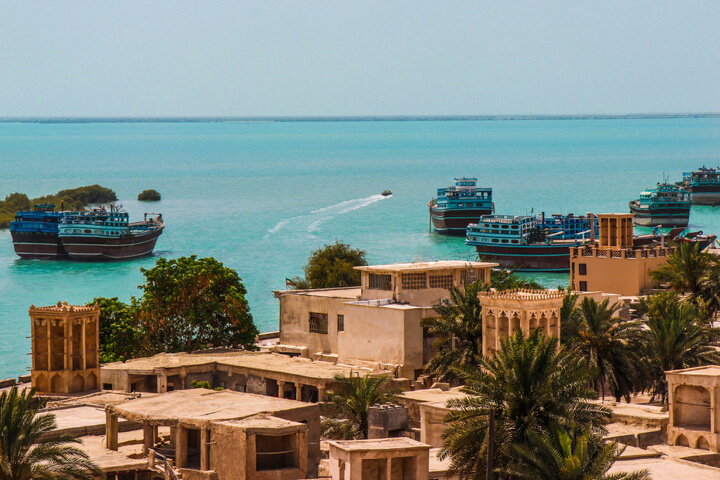Wind towers to undergo restoration for tourism’s sake

TEHRAN – The centuries-old wind catchers of Bandar-e Laft, a village with rich heritage in southern Iran, are set to undergo restoration, a move expected to invigorate local tourism, said Qeshm Islnad’s tourism official.
“Wind towers are shining examples of Persian civilization and advanced engineering methods of the ancient times,” Ebrahim Rostam-Gurani remarked during a visit to Laft. “Some 150 wind towers play a major part in moderating the hot and humid summer climate of the village.”
Due to accumulated damages over time, these wind catchers require restoration to rejuvenate local tourism, he added.
Rostam-Gurani also emphasized that Laft port, designated as the tourist gateway to Qeshm Island, attracts numerous visitors annually, highlighting its significance in local tourism initiatives.
Collaborative renovation efforts with the Laft municipality are already underway, with the wind towers’ restoration project set to commence soon, the official winded up.
Perched on a rocky slope in the Persian Gulf, the fishing village of Laft offers its visitors a patchwork of delightfully photogenic scenes minarets and badgirs which once were an essential element for the residential structures as an air-conditioning system.
Wind towers, also known as wind catchers or “badgirs” in Persian, are traditional architectural elements found predominantly in Iran. These towers have been ingeniously designed to capture and channel natural breezes to cool and ventilate buildings, particularly in hot and arid climates.
Wind towers have been an integral part of Iranian architecture for centuries. They typically consist of tall, chimney-like structures positioned on the roofs of buildings. Their design includes multiple openings or vents positioned to capture prevailing winds at different angles and direct them down into the living spaces below.
The captured wind passes through a series of ducts or shafts within the building, creating a natural cooling effect through evaporative cooling and ventilation. This ingenious passive cooling system helps to regulate indoor temperatures, providing comfort during the scorching heat of summers.
In addition to their functional aspects, wind towers also hold cultural and architectural significance, reflecting the creativity and understanding of natural elements by ancient Iranian builders. Their presence in traditional Iranian architecture showcases an environmentally sustainable approach to cooling and ventilation that remains relevant even in modern times.
XF/AM
